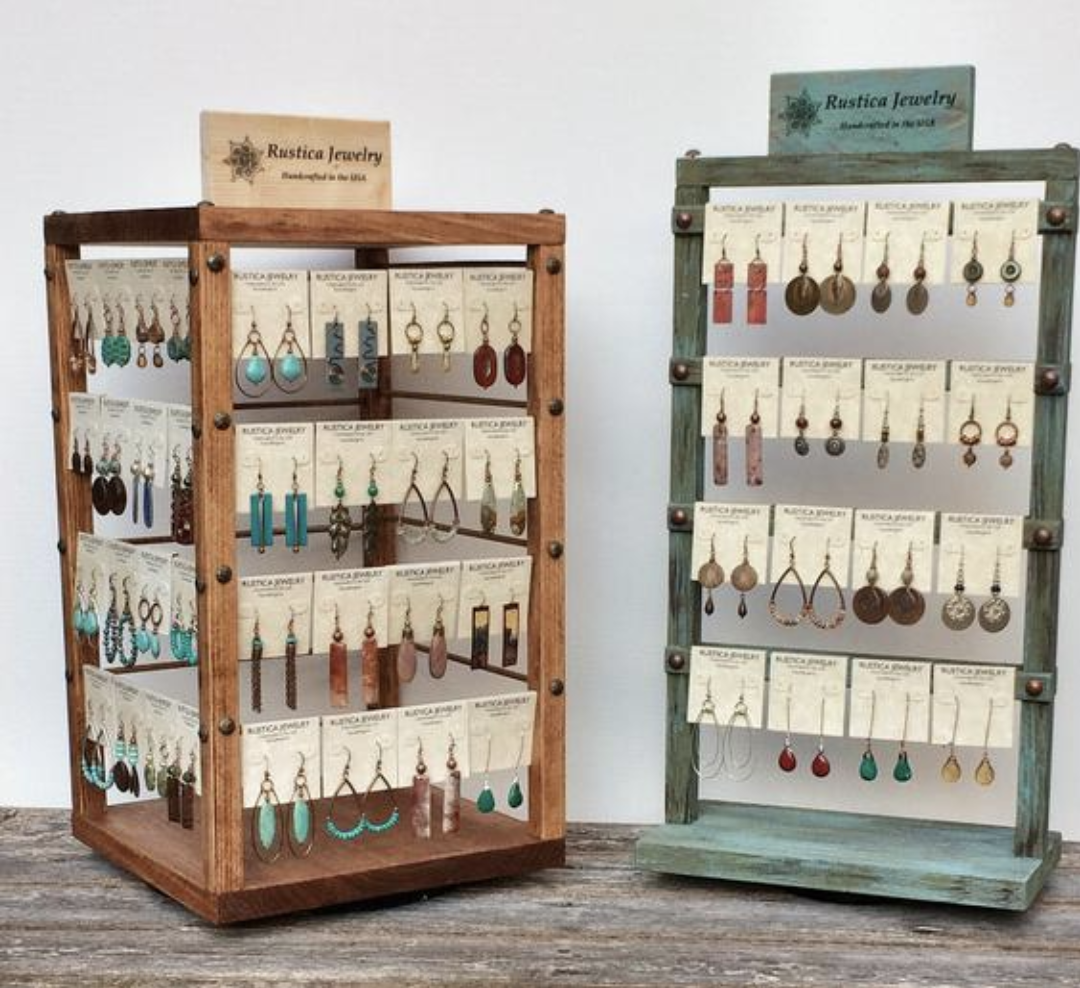Considering a Store Display For Your Line? 3 Principles to Keep In Mind
Having a great product is always Job One for a maker. The beauty, artistry, quality, and branding of the pieces you make are the foundation of everything that happens in a handmade business.
That said, if wholesale is your focus, your primary customer is the creative, hardworking store owner who buys from you. And that means that your job is to help them sell your work -- not simply to hand off your line and hope for the best.
There are multiple components to help your line to stand out on -- and fly off -- store shelves. Branding, packaging, and pricing are among them. But one interesting -- and lesser used -- tool you can use is that of store displays.
We dig more into the hows and whys of store displays, signage, and starter packs in the Wholesale In a Box Course. But in this article, I want to look at a few displays that work well and call out three principles that you can use for your own store display, if that’s something that makes sense for your business.
3 principles to use in creating a store display for your handmade line:
1. Keep the display simple, above all.
I love this display from Humboldt House in Chicago, IL. It’s beautiful but it’s also very simple, which helps highlight the bold jewelry in contrast. While this particular display is likely one that Humboldt House created in-house, it is a format that could work well for a jewelry maker to provide to a shop owner, especially in combination with a small sign to accompany it.
Via @humboldthouse
What’s working here:
The look of the display complements, but doesn’t overshadow, the aesthetic of the jewelry.
It is versatile and can be combined with other merchandising elements by the store owner.
It’s affordable to make, as the structure itself is fairly simple.
2. Use resources you already have and match the display’s aesthetic to your line
Linda at Rustica Jewelry creates these displays for her line (and actually sells them to other makers too.) She partners with her husband to create the displays, since he’s a woodworker.
Via @rustica_jewelry
What’s working here:
The aesthetic of these displays is rustic, and simultaneously muted and colorful. That matches Linda’s aesthetic perfectly and works well for the stores that buy from her.
The displays have a small footprint and rotate to showcase more pieces from her line.
She’s found a way to produce these easily and economically, by using resources she already has. While not everyone has a woodworker husband they can ask to make displays, everyone does have resources on hand (whether materials, skills, or collaborators) that they can leverage.
They incorporate a bit of branding in an unobtrusive way.
3. Consider adapting displays you already have
Quiet Cricket has a beautiful line of candles and apothecary items. While she’s going strong with wholesale, Hannah from Quiet Cricket actually got her start at craft markets. Because of that, she has a lovely display that she uses at markets -- but would translate very well to wholesale. While she hasn’t yet, she could consider adapting this display to be used in-store by shop owners.
What works here:
The display has multiple tiers to showcase multiple products from the line.
The aesthetic aligns perfectly with Quiet Cricket’s sweet, minimal, dreamy brand.
Its relatively small size would make it easy and affordable to ship and helps with any footprint or shelf space concerns that store owners might have.
All in all, using store displays and signage in your wholesale strategy can help set you apart from other makers and help stores sell your work. When thinking about them in the big picture of your overall business strategy, remember to keep them well designed (matching the aesthetic of your brand), simple, cost-effective, and with as small a footprint as possible.





